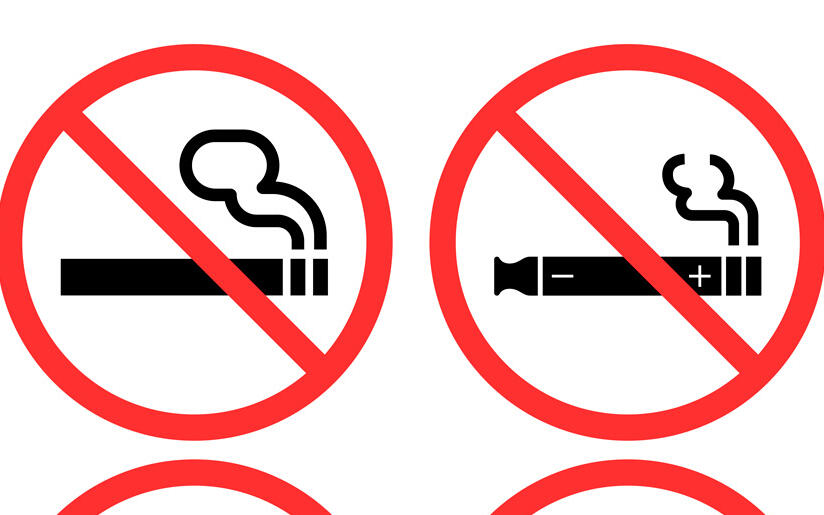Emphasising the Vital Role of Workplace Safety Signage
Welcome to our in-depth exploration of workplace safety signage, a critical element in maintaining a safe and compliant working environment. Imagine a typical day at work – bustling with activity, machines humming, people focused on their tasks. Now, picture this scene without any safety signs. It's a scenario fraught with potential hazards, where the risk of accidents and non-compliance looms large. This is where the quintessential role of safety signage becomes undeniably evident.
In this guide, we delve into the myriad types of safety signs that adorn our workplaces, from the unmistakable fire exit signs to the cautionary notes warning of potential hazards. These signs are not mere fixtures on walls or doors; they are the silent guardians of our well-being, ensuring that everyone, from the newest employee to the seasoned veteran, is constantly reminded of the safety protocols.
But why is understanding these signs so crucial? For starters, they are a legal requirement. Businesses across the UK and beyond are mandated to display proper safety signage to adhere to health and safety regulations. This isn't just about ticking boxes for compliance; it's about fostering a culture of safety that permeates every aspect of our work life.
Moreover, safety signs play a pivotal role in emergency situations. In the event of a fire or other emergency, a clearly marked exit sign can be the difference between a swift, orderly evacuation and chaos. Similarly, hazard signs help in preemptively identifying potential risks, allowing employees to take necessary precautions.
However, the mere presence of these signs is not enough. It's the understanding and adherence to what they signify that truly creates a safe workspace. This is why, through this blog post, we aim to not just introduce you to the various types of safety signs but to also guide you in implementing them effectively. Whether you're an entrepreneur ensuring your startup is on the right side of safety regulations, or a health and safety officer in a large corporation, this guide is designed to equip you with the knowledge you need to make your workplace safer for everyone.
Join us as we embark on this journey through the world of workplace safety signage. Together, we'll explore its nuances, understand its significance, and learn how to apply it effectively in our daily work life. Let's turn the page on safety ignorance and embrace a culture of informed caution and compliance.
The Crucial Role of Safety Signage in the Workplace
In any workplace, safety is paramount. It's the foundation upon which productive and efficient operations are built. This section delves into the critical role that safety signage plays in ensuring a secure and compliant work environment.
The Lifesaving Language of Safety Signs
Safety signs serve as a universal language, transcending barriers of speech and literacy. They provide instant, often life-saving information, guiding us through potential hazards and safety protocols. These signs, with their distinct colours and symbols, are designed to catch the eye and deliver crucial messages even in the most hectic work environments.
Legal Compliance: More Than Just a Formality
Adhering to health and safety regulations isn't just a matter of legal compliance; it's a fundamental responsibility of any employer. In the UK, for instance, the Health and Safety (Safety Signs and Signals) Regulations 1996 mandate the use of safety signage in workplaces. This legal framework ensures that all employees, regardless of their role or experience, have clear and consistent guidance on safety procedures.
Case Studies: Lessons Learned
Examining real-life incidents where safety signage played a decisive role can be enlightening. Consider, for instance, a case where clear exit signs in a manufacturing plant enabled quick evacuation during a fire, potentially saving lives. Conversely, consider the consequences in a workplace where inadequate hazard signage led to a preventable accident. These examples underscore not just the necessity of proper signage but also the dire consequences of neglecting it.
The Impact of Signage on Safety Culture
The presence and adherence to safety signage are indicative of an organisation’s commitment to creating a culture of safety. This culture is about more than just avoiding accidents; it's about fostering an environment where safety is ingrained in every action and decision. When employees see that their workplace invests in clear, well-maintained safety signs, it reinforces the message that their safety is a top priority.
Addressing the Challenges
Despite its apparent simplicity, implementing effective safety signage can be fraught with challenges. These range from ensuring the signs are up-to-date with current regulations to making them visible and understandable in diverse and dynamic work environments. Overcoming these challenges requires a concerted effort and a deep understanding of both the legal requirements and the unique needs of a workplace.
In conclusion, safety signage is a vital component of workplace safety, serving as a constant reminder and guide in maintaining a secure environment. Its role extends beyond mere compliance; it's about building a culture of safety that values every individual's well-being. As we move forward, let's keep in mind that every sign, every symbol, is a step towards a safer, more secure workplace.
Deciphering the Array of Workplace Safety Signs
Navigating the world of workplace safety signage can be akin to learning a new language. This section aims to elucidate the various types of safety signs commonly found in the workplace, their meanings, and their applications. Understanding these signs is essential for ensuring safety and compliance.
Fire Safety Signs: Pathways to Safety
Fire safety signs are crucial in guiding employees during emergencies. These signs, often in a bright red colour, indicate the location of fire extinguishers, alarms, and emergency exits. They are designed for quick recognition, ensuring that even in a state of panic, individuals can locate and utilise fire safety equipment or find the nearest exit. The proper placement of these signs is crucial; they must be visible even in smoky conditions and located at strategic points to guide towards the safest exit route.
Hazard Signs: Forewarning of Potential Dangers
Hazard signs, typically yellow with black pictograms, are used to warn about potential dangers. These could range from chemical hazards, such as corrosive substances, to physical hazards like slip and trip risks. The importance of these signs lies in their ability to alert workers to take precautionary measures, such as wearing protective equipment or avoiding certain areas. It's crucial that these signs are placed close to the actual hazard and are easily visible to all who are at risk.
Prohibition Signs: Preventing Unsafe Practices
Prohibition signs are essential for indicating actions that are not permitted within the workplace, such as 'No Smoking' or 'No Entry' signs. Usually red with a diagonal line through a pictogram, these signs are direct in their messaging and are often legally required in certain areas to maintain safety and compliance. Their placement is vital – they need to be clearly visible at the points where they are most relevant.
Mandatory Signs: Ensuring Essential Actions are Taken
In contrast to prohibition signs, mandatory signs prescribe specific actions that must be taken. These are often blue with a white pictogram, signifying actions such as wearing safety helmets, eye protection, or hearing protection in designated areas. These signs are critical in areas where specific safety measures are necessary to prevent accidents or injuries.
Safe Condition Signs: Directions to Safety and Aid
Safe condition signs, typically green with white pictograms, indicate safety equipment locations or escape routes. These include first aid kits, emergency showers, or safety assembly points. Their purpose is to guide individuals towards help or safety, especially in emergencies. Ensuring these signs are unobstructed and well-lit is key to their effectiveness.
Customised Signs: Tailoring to Specific Workplace Needs
While standard signs cover most general safety needs, some workplaces require customised signs to address unique hazards or instructions specific to their environment. This could include warnings about specific machinery, processes, or environmental conditions. Customised signs should be designed with the same principles of clarity and visibility in mind.
In summary, workplace safety signs are a vital component of any health and safety strategy. They communicate crucial information quickly and effectively, helping to prevent accidents and ensure compliance with safety regulations. Their correct usage involves not just placing them in the right locations but also ensuring they are understood and adhered to by all employees. As we delve deeper into the specifics of each type of sign, remember that each one plays a pivotal role in creating a safer work environment.
Implementing and Maintaining Effective Workplace Safety Signage
Implementing safety signage in the workplace is not just about putting up signs; it involves a strategic approach to ensure that these signs are effective, visible, and understood by all. This section focuses on the best practices for implementing and maintaining safety signage in the workplace.
Visibility and Readability: Ensuring Clear Communication
The primary purpose of safety signage is to communicate important information quickly and unambiguously. This requires signs to be highly visible and easily readable. Factors such as size, colour contrast, and placement play a crucial role. Signs should be large enough to be read from a reasonable distance and placed at eye level in well-lit areas. Additionally, using universally recognised symbols and simple language (or even multiple languages where necessary) can help ensure that all employees, regardless of their native language, understand the signs' messages.
Regular Updates and Maintenance: Keeping Signs Relevant
Safety signs should be regularly reviewed and maintained. This involves ensuring that they are in good condition, free from obstructions, and up-to-date with current safety practices and regulations. Faded, damaged, or outdated signs can lead to misunderstandings and potentially hazardous situations. Regular audits of the workplace to assess the efficacy and condition of existing signs, as well as to identify the need for additional signage, are essential.
Employee Training: Cultivating a Culture of Safety
Effective safety signage is only part of the equation; ensuring that employees understand and adhere to the signs is equally important. Regular training sessions should be conducted to educate employees about the meaning of different signs, the actions required when they encounter them, and the importance of compliance. Interactive sessions, such as quizzes or workshops, can be effective in reinforcing this knowledge.
Customising Signs for Specific Workplace Needs
Generic signs may not be sufficient for all workplaces, especially those with unique hazards or procedures. Customising signs to address specific risks or instructions can significantly enhance safety. This involves consulting with health and safety professionals, as well as employees, to identify the specific needs of the workplace and designing signs that address these needs effectively.
Integrating Technology for Enhanced Safety
Advancements in technology offer new possibilities for enhancing the effectiveness of safety signage. This could include the use of digital signs that can be updated easily, illuminated signs for better visibility in low-light conditions, or even interactive signs that provide more detailed information when needed. Exploring these options can be a significant step towards a more dynamic and responsive safety communication strategy.
Legal Compliance: Navigating the Regulatory Landscape
Staying compliant with health and safety regulations is not only a legal requirement but also a moral obligation. This means being aware of the specific laws and standards that apply to your industry and location and ensuring that your signage meets these requirements. Regular updates to signage may be necessary to align with changes in legislation.
In conclusion, effective implementation and maintenance of workplace safety signage are critical for ensuring a safe and compliant work environment. This involves not only the physical aspects of the signs themselves but also the processes and culture surrounding them. A proactive approach, combined with regular reviews and updates, can help create a workplace where safety is clearly communicated and deeply ingrained in the everyday practices of all employees.
Navigating Legal Requirements for Safety Signage in Ireland
Understanding and adhering to legal requirements for safety signage in the Irish workplace is not just a matter of compliance, but a fundamental aspect of ensuring employee safety and well-being. This section provides an in-depth look at the Irish legal framework regarding workplace safety signage and practical guidance for compliance.
Overview of Irish Safety Signage Regulations
In Ireland, the primary legislation governing the use of safety signage in the workplace is the Safety, Health and Welfare at Work Act 2005, along with the Safety, Health and Welfare at Work (General Application) Regulations 2007. These laws mandate employers to provide a safe workplace, which includes the appropriate use of safety signage to warn of potential hazards.
The Role of the Health and Safety Authority (HSA)
The Health and Safety Authority (HSA) in Ireland plays a crucial role in enforcing workplace safety laws, including those related to safety signage. They provide guidelines and resources to help businesses understand their obligations. Staying informed about HSA guidelines ensures that your safety signage not only meets legal standards but also follows best practices for workplace safety.
Specific Signage Requirements and Standards
Under Irish law, safety signage must be clear, legible, and used consistently throughout the workplace. This includes:
- Fire safety signs (e.g., fire exit, fire extinguisher locations)
- Prohibition signs (e.g., no smoking)
- Mandatory signs (e.g., requirement to wear personal protective equipment)
- Warning signs (e.g., caution for wet floors)
- Emergency escape or first-aid signs
These signs must conform to the European Union's ISO 7010 standard, which specifies the design and colour of safety signs to ensure consistency and recognisability.
Conducting a Safety Signage Audit
Regular safety audits are essential for compliance. This involves assessing the workplace to ensure that all necessary signs are in place and that they meet the legal requirements. It also includes checking for any changes in the workplace that might require new or additional signage.
Training and Awareness
Compliance is not just about having the right signs; it's also about ensuring that all employees understand the signs and the actions they require. Regular training sessions and awareness campaigns can help reinforce the importance of safety signage and educate employees about new or updated signs.
Keeping Up with Legislative Changes
Safety and health legislation can evolve, necessitating updates to safety signage. Employers must stay informed about any changes in the law and adjust their signage accordingly. Subscribing to updates from the HSA or consulting with health and safety experts can help in staying compliant.
Record-Keeping and Documentation
Maintaining records of all safety signage, including when they were installed and any updates or changes, is crucial. This documentation can be invaluable during inspections or in the event of an incident, as it demonstrates the employer’s commitment to maintaining a legally compliant safety environment.
In conclusion, navigating the legal requirements for safety signage in Ireland involves a comprehensive approach that includes understanding and adhering to the relevant legislation, conducting regular audits, training employees, and staying abreast of changes in the law. By doing so, employers not only ensure compliance but also contribute to creating a safer and more informed workplace.
Fortifying Safety through Effective Signage
As we conclude our exploration of workplace safety signage, it's imperative to reflect on the profound impact these seemingly simple signs can have in fostering a safe and compliant working environment. This guide has taken us through the myriad facets of safety signage, from understanding their critical role and varied types to implementing and maintaining them in accordance with Irish legal requirements.
Summarising the Journey of Safety Signage
We commenced by highlighting the vital role of safety signage in the workplace, serving as a universal language of caution and guidance. We navigated through the different types of signs - fire safety, hazard, prohibition, mandatory, and safe condition signs - each playing a unique role in safeguarding the workforce. The journey further led us to best practices for implementing these signs effectively, emphasising visibility, readability, and regular maintenance.
The Intersection of Compliance and Safety Culture
Our discussion underlined the importance of not only adhering to Irish legal standards but also fostering a culture of safety that transcends mere compliance. Through regular employee training and awareness, businesses can cultivate an environment where safety signage is respected and followed, thereby reducing risks and enhancing overall workplace safety.
The Continuous Process of Safety Enhancement
Safety in the workplace is not a static goal but a continuous journey. Keeping safety signage up-to-date, conducting regular audits, and staying informed about legislative changes are ongoing responsibilities for employers. It’s a process of constant improvement, adapting to new challenges and evolving safety standards.
Encouraging Proactive Safety Measures
As we wrap up, we encourage all businesses, irrespective of size or industry, to take a proactive approach towards safety signage. This involves not just installing the signs but also ensuring they are understood and respected by every member of the organisation. Regular reviews and updates of safety protocols, coupled with comprehensive training programs, are essential steps in this direction.
The Role of Each Individual
It's also crucial to remember that workplace safety is a collective responsibility. Every employee, from the top management to the newest recruit, has a role to play in adhering to and upholding the standards set by safety signs. It is this collective effort that ultimately creates a safe and compliant working environment.
In essence, safety signage is a fundamental element of workplace safety, serving as both a guide and a protector. Its significance extends beyond mere legal compliance; it is about safeguarding human life and well-being. By understanding, implementing, and respecting safety signage, we contribute to creating a safer, more responsible, and more productive workplace. Let this guide be a stepping stone towards a heightened awareness and a stronger commitment to workplace safety.








Comments (0)
Add a Comment